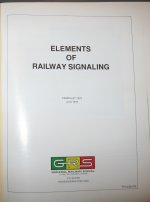rQx
Lifetime Supporting Member
Hi,
We normally use the Allen Bradley 100-c contactors with electronic coil wich has low pick up current. These range up to 27,5kW.
Now I need bigger but here's my issue:
The pickup current for a DC coil is 200W.
1. We control this through a SMC-3 soft start and the output from it is rated:
Rated Operational Current (max.) 0.6 A @ 120V AC and 0.3 A @ 240V AC
Make/Break VA 432/72
Am I correct in assuming that I can use this contactor with this soft start? The operational current is only 4W for the contactor. But the pickup is 200W, the Make for the soft start is 432VA. I think that it's a large load on a small relay in the soft start and since we can start this motor up to 40 times an hour the stress for the relay is significant. But it seems like overkill to have a interface relay wich in this case should be an interface contactor to handle the current.
2. It is also connected to an safety relay as emergency stop contactor, the output from the safety relay is rated DC-13: 3A / 24 V DC.
I struggle to get my mind about how these large contactors are controlled when there aren't many output that can handle the load. Or shouln't I look at the rated current when I try to dimension for pick up?
Thankfull for any input
/Tim
We normally use the Allen Bradley 100-c contactors with electronic coil wich has low pick up current. These range up to 27,5kW.
Now I need bigger but here's my issue:
The pickup current for a DC coil is 200W.
1. We control this through a SMC-3 soft start and the output from it is rated:
Rated Operational Current (max.) 0.6 A @ 120V AC and 0.3 A @ 240V AC
Make/Break VA 432/72
Am I correct in assuming that I can use this contactor with this soft start? The operational current is only 4W for the contactor. But the pickup is 200W, the Make for the soft start is 432VA. I think that it's a large load on a small relay in the soft start and since we can start this motor up to 40 times an hour the stress for the relay is significant. But it seems like overkill to have a interface relay wich in this case should be an interface contactor to handle the current.
2. It is also connected to an safety relay as emergency stop contactor, the output from the safety relay is rated DC-13: 3A / 24 V DC.
I struggle to get my mind about how these large contactors are controlled when there aren't many output that can handle the load. Or shouln't I look at the rated current when I try to dimension for pick up?
Thankfull for any input
/Tim







